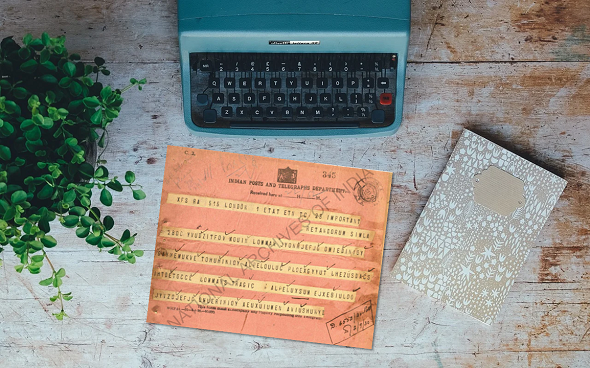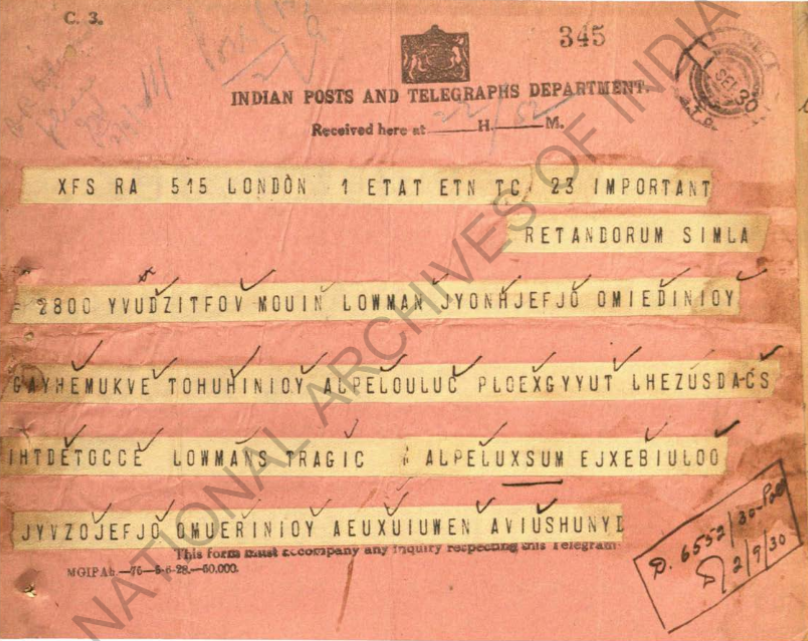Here’s an telegram from 1952 that might have been encrypted in a code. Can a reader find out which codebook has been used and decipher the message?
I have found another interesting crypto mystery on Reddit. This time it’s an encrypted telegram from 1952.
The telegram
As can be seen on the following scan, the telegram in question bears the logo of the Indian Posts and Telegraphs Department:
The telegraph form is dated 1952/9/2. Apparently, this dispatch was sent from London to Simla (today spelled Shimla), a city in the north of India. Between 1867 and 1948, Shimla served as the summer capital of the British in India. Even after 1948, when India had become independent, Simla remained an important political center.
The code
The text of the said telegram mainly consists of ten-letter words such as YVUDZITFOV, ALPELUXSUM, or PLOEXGYYUT. My guess is that these expressions are codewords taken from a codebook. They don’t look random enough to represent text encrypted in a MASC or polyalphabetic cipher.
Two words, MOUIN and TRAGIC, have only five letters, which suggests that the codewords actually consist of five letters and that they were noted pairwise without a blanc in the middle.
The word LOWMAN, which appears twice in the text, doesn’t fit into the five-letter scheme. It might be a name or a codename of something or someone not listed in the codebook.
I wonder what RETANDORUM in the first line means. Is it just another codeword, perhaps assembled from the five-letter words RETAN and DORUM, or is it a Latin expression (e.g., genitive plural of RETANDUS). To my regret, I couldn’t find this word on Google.
Telegrams encrypted in a codebook code are nothing unusual. Governments, military organisations, and diplomatic services usually had their own codebooks, which were, of course, kept secret. The following scan shows a codebook page (it’s certainly not the one used here):
The only way to decipher a ciphertext created with a code is usually to find the codebook that has been used. The two best sources for this purpose are the websites of Satoshi Tomokiyo and John McVey. Can a user identify the codebook used for the London-Simla telegram?
Another interesting question is how the codewords of the code used here were created. All these words are pronounceable, for instance AVIUSHUNYD. The vowel-to-consonant ratio is probably around 40 percent, like in a natural language. Anyway, contrary to other codes, these words are apparently not taken from a real language. Is there a method to generate codewords of this kind?
As always, I’m looking forward to interesting comments.
Follow @KlausSchmeh
Further reading: An encrypted telegram about the sales of the Danish West-Indies
Linkedin: https://www.linkedin.com/groups/13501820
Facebook: https://www.facebook.com/groups/763282653806483/





Kommentare (18)